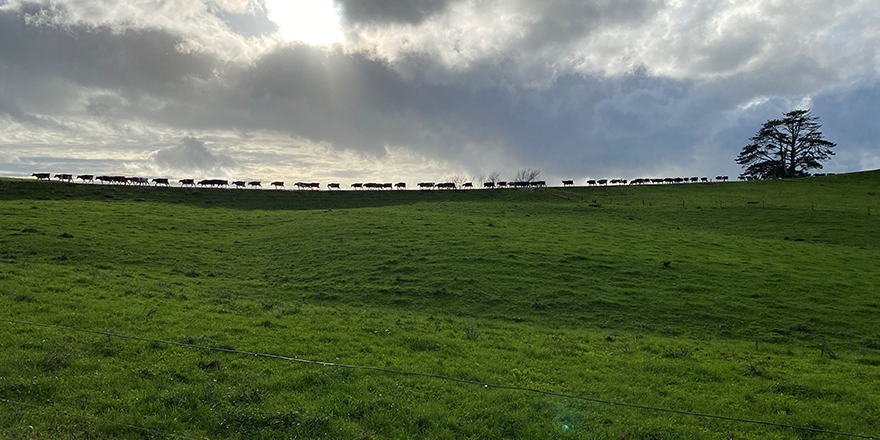
Executive summary
The dairy sector is a cornerstone of New Zealand’s economy, contributing significantly to national and regional prosperity. In the year ending March 2023, dairy exports generated nearly $26 billion, making up about one in every four export dollars. The dairy sector also provides substantial value-added contributions, delivering $11.3 billion to the economy.
Dairy farming supports regional economies by creating well-paying jobs and sustaining local communities. For example, Canterbury alone generates nearly $3.75 billion from dairy and employs around 55,000 people (DairyNZ, 2023).
Although there is a strong dairy economy around New Zealand, not every farm is prospering and there can be significant differences in profit across New Zealand dairy farms and within regions. The root cause of these variances are not always clear or consistent, but there is strong evidence to suggest that it is largely driven by technical and decision making skills of the individuals making the decisions for the farms.
So what are these skills? This research paper aims to look into the skills with a high correlation with profit and explores the possible impact of strengthening these skills both on a micro and macro scale. By focusing on key skills that drive profitability, both individual farms and the sector as a whole can achieve greater economic well-being and resilience.
Objectives include comparing regional skill levels, investigating influencing factors, and developing recommendations to improve skills on less profitable farms. The study will assess the opportunities to improve farm profitability through training and education. Aiming to provide strategies for continuous education and professional development to boost profitability and support the dairy industry’s growth.
The methodology involves utilizing DairyNZ’s DairyBase system to gather comprehensive data of on farm performance across various regions in New Zealand, focusing on key performance indicators (KPIs) related to profitability. The collected data is analysed to identify high and low performing farms based on profitability metrics, categorizing them into respective groups for further analysis. Quantitative analysis is conducted to identify patterns and correlations between skill levels and farm profitability, using statistical methods to determine the significance of various factors that correlate highly with profit. Finally, the industry data is used to identify skills or areas that have the highest impact on farm profitability and the impacts this could have at individual farm, regional and national levels.
The key findings emphasize the importance of strategic business management, identifying and addressing gaps, and regional analysis for improving farm profitability. Strategic business management involves taking a step back to gain perspective through benchmarking, business planning, and financial analysis. This helps farmers pinpoint areas needing improvement and understand the economic impact of various practices and investments.
Regional analysis of DairyBase data from Waikato and Canterbury highlights that highly profitable farms excel in maximizing pasture and crop consumption per hectare, minimizing operating expenses, and achieving high labour efficiency. These areas show the most significant correlation with profit. Training opportunities should be made available to farmers to support development in these areas, as improving these skills could lead to substantial economic benefits for both individual farms and the sector as a whole. Further research into skills with a high correlation with profit is recommended to enhance the overall prosperity of the dairy industry.
Recommendations for Decision-Makers:
Training Providers: Develop and deliver targeted training programs focusing on both strategic and operational aspects of dairy farming. This includes financial management and planning, benchmarking and performance analysis, pasture and crop management, operational efficiency, and leadership development. By offering these programs as micro-credentials, formal recognition of skills and knowledge can be provided and it also allows for courses to be funded, making the training more attractive and accessible to farmers.
Industry Bodies: Support and promote these training initiatives to ensure widespread adoption. Highlight the importance of strategic planning and operational efficiency in improving farm profitability. Encourage farmers to participate in these programs by showcasing success stories and providing resources that make it easier for them to engage in continuous learning.
Farmers: Investing in training for both oneself and the workforce can significantly enhance farm operations and profitability. It’s important to understand the business and individual situations, look for opportunities to benchmark the business through systems such as Dairybase, and then consider opportunities for improvement based on the findings, whether in business, technical, or operational skill development.
Other Stakeholders: Banks, dairy processors, and other sector partners should encourage and recognize the completion of these training programs. For example, banks could offer better loan terms to farmers who have completed financial management courses, while dairy processors could link incentives with accreditation of training which supports business resilience, efficiency and sustainability practices. By fostering these partnerships, the sector can create a supportive environment that values continuous learning and improvement.
By providing targeted training programs in strategic and operational aspects of dairy farming, the sector can enhance farm operations and profitability. Industry support and incentives from stakeholders will foster continuous learning, benefiting both farmers, the sector and the NZ economy.
Hamish Hodgson




